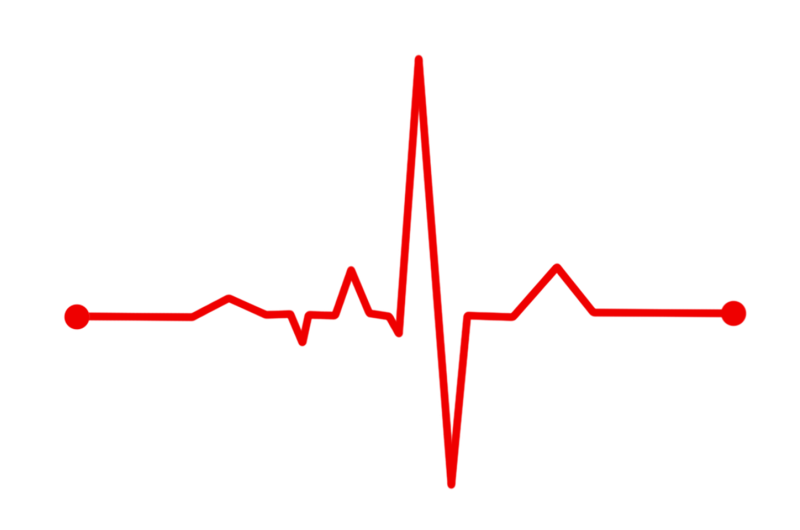This article has been reviewed according to Science X's editorial process and policies. Editors have highlighted the following attributes while ensuring the content's credibility:
fact-checked
reputable news agency
proofread
Know your numbers: What is your heart rate?

Your heart rate, or pulse, is the number of times your heart beats per minute. Your resting heart rate is when the heart is pumping the lowest amount of blood you need because you're not exercising.
If you're sitting or lying down ― and you're calm, relaxed and aren't sick ― your heart rate is typically between 60 and 100 beats per minute.
Other factors that can affect your heart rate include:
- Air temperature. When temperatures or humidity increases, the heart pumps more blood, so your pulse or heart rate may increase.
- Body position. Sometimes, when going from sitting to standing, your pulse may go up a little. After a few minutes, it should return to a typical rate.
- Emotions. If you're stressed, anxious or incredibly happy, your emotions can raise your heart rate.
- Body size. Body size usually does not increase your heart rate. However, if you're obese, you may have a higher resting heart rate.
- Medication use. Medications that block adrenaline tend to slow your heart rate. Thyroid medication may raise it.
Why your heart rate matters
Cardiovascular exercise, also called cardio or aerobic exercise, keeps you and your heart healthy. This specific type of exercise gets your heart rate up and your heart beating faster for several minutes. Cardiovascular exercise helps strengthen your heart, allowing it to pump blood more efficiently and improving blood flow to all parts of your body. It also boosts your high-density lipoprotein (or HDL), or "good" cholesterol, and lowers your low-density lipoprotein (or LDL), or "bad" cholesterol. This may result in less buildup of plaque in your arteries.
What's your target heart rate?
Your target heart rate is the minimum heart rate you need to maintain in a given amount of time to reach the energy level necessary to give your heart a good workout. To find your target heart rate to maximize your cardiovascular exercise, the first step is determining your maximum heart rate.
Your maximum heart rate is 220 minus your age. Your target heart rate for moderate to vigorous exercise is about 50%–85% of your maximum heart rate.
Averages by age as a general guide are:
- 20: 100–170 beats per minute
- 30: 95–162 beats per minute
- 35: 93–157 beats per minute
- 40: 90–153 beats per minute
- 45: 88–149 beats per minute
- 50: 85–145 beats per minute
- 55: 83–140 beats per minute
- 60: 80–136 beats per minute
- 65: 78–132 beats per minute
- 70: 75–128 beats per minute
What you can do
- Start slow. If you are beginning an exercise program, aim for the lower end of your target heart rate zone and then gradually build up intensity.
- Try interval training. Interval training, which includes short bursts ― 15–60 seconds ― of higher-intensity exercise, alternated with longer, less strenuous exercise, effectively increases cardiovascular fitness. Talk with your health care team before trying interval training, but it is typically safe for those with existing heart disease and type 2 diabetes.
- Take the "talk test." If you can carry on a conversation in brief sentences while exercising, you're probably in the moderate intensity range. You'll be breathing faster, developing a light sweat and feeling some muscle strain. If you're working at a vigorous intensity, you won't be able to say more than a few words without catching your breath. If you can sing while working out, you're probably in the low-intensity range, so step it up.
Know your numbers
Many wearable activity trackers can monitor your heart rate when you exercise and periodically throughout the day. If you don't have an activity tracker, you can use the radial artery in your wrist or the carotid artery in your neck. If you have heart disease or long-standing diabetes, it's best to use the artery on your wrist.
To find your heart rate manually:
- Locate the artery you will use to find your heart rate.
- Using the tips of your first two fingers, press lightly over the artery.
- Count your heartbeats for 30 seconds and multiply by two to find your total beats per minute.
If your heart rate is too high, take it easier. If it's too low, add some intensity and push yourself to get your heart rate closer to your target.
Abnormal heart rate
If you experience irregular heartbeats, including a racing heartbeat, slow heartbeat or a feeling of fluttering in your chest, you may be experiencing a heart arrhythmia. Heart rhythm or heartbeat problems can occur when the electrical impulses that coordinate your heartbeats don't work properly, causing your heart to beat too fast, slow or irregularly. Talk with your health care team if you have heart rhythm concerns.
2024 Mayo Clinic News Network. Distributed by Tribune Content Agency, LLC.




















